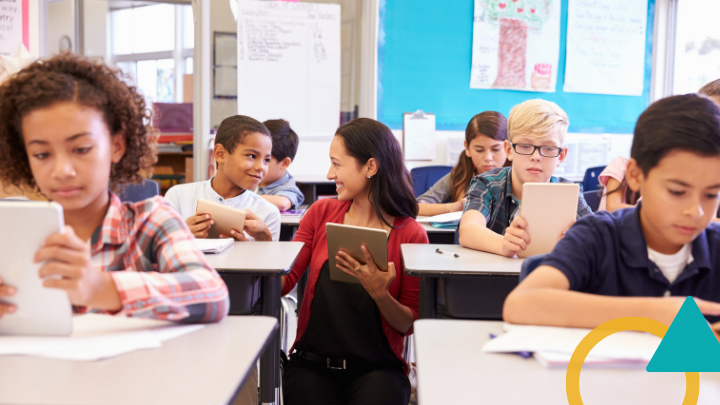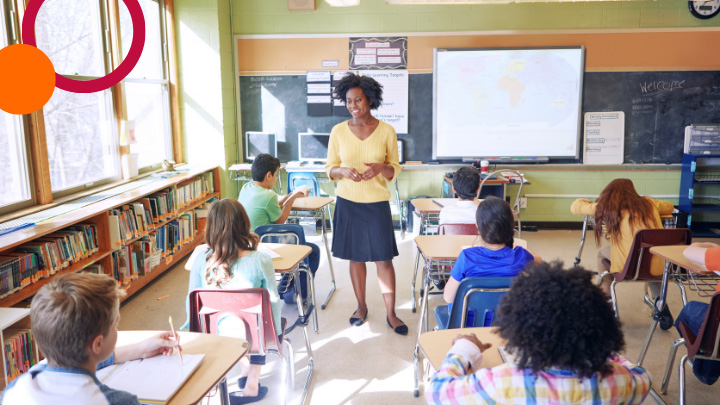Teachers are busy—we are unit planning, lesson planning, adopting new curriculum, attending team meetings, calling families, looking at data, putting out daily fires… the list goes on and on! And while we do this work each and every day, our own implicit biases (our unconscious attitudes and stereotypes that affect our decisions) are also at work. These biases are unconsciously informing our instructional decisions and our classroom practices. Our implicit biases are at play when we set up our classroom, when we decorate our walls, and when we establish both assessment and discipline practices.
As schools shift towards examining equity both in classrooms and in schools, it is essential that we teachers develop reflective practices where we can critically examine our own language, instructional decisions, and curriculum. Below are five steps that any educator can take to begin this equity work.
1. Commit to Doing the Hard Work
The first step we need to take is to confront our own implicit biases. Even the most progressive educators with the best intentions must commit to examining their own biases in order to most effectively teach all students. But what does this work look like?
In BetterLesson’s Identifying and Addressing Implicit Bias strategy, there are many tools and techniques to help us start this work. One powerful way to reflect on our own biases is by taking an implicit bias test from Harvard’s Project Implicit and using this experience to help you reflect on how these biases may be impacting your classroom. This tool from Teaching Tolerance can help you unpack your experience with the implicit bias test. Similarly, educators can also commit to unpacking their own privilege and examining how their privilege impacts their classroom. There are many powerful readings that can facilitate this work, such as White Fragility by Robin D’Angelo and White Privilege: Unpacking the Invisible Backpack by Peggy McIntosh. Finally, we can commit to building our own understanding of how the social construct of race has been used to promote ongoing systems of oppression. Using Race: The Power of an Illusion as a tool can support this work.
2. Reflect on Your Language with Students
A starting step for any educator hoping to promote more equity in their classroom is to reflect on the language that they use daily with students. For example, you can ask yourself: Does my language reflect your values of equity? Does my language support all students’ making sense of the content? Does my language honor students’ potential? Do I know the correct pronunciation of all students’ names? Do I regularly call students’ by their correct names? How often do I say “no” in my classroom? How often do I ask students to “sit down” and “be quiet”? Which students do I say this to the most? Whose voice is dominating classroom discourse: teacher or student?
One way for an educator to do this reflection is by leveraging teaching videos (link only accessible if you have a BetterLesson Lab account). Set a purpose for watching your own video, try to use low-inference notes or data tracking to examine your own practice, and take time to reflect and recommit to your goals afterward.
3. Examine your Curriculum Decisions and Instructional Practices
Looking closely at your curriculum decisions and instructional practices with an eye towards racial equity can be a powerful tool for an educator hoping to gain a deeper insight into how their own biases are showing up in their classroom. For example, research demonstrates that non-Black teachers have significantly lower expectations of Black students (Gerhenson, Holt, & Papageorge, 2015). Biases such as these show up in the curriculum we employ and the instructional strategies we use.
Examining your own curriculum and asking questions like: How does this curriculum support students as sense-makers? How does this curriculum reflect the diverse range of students in my classroom and the diversity of human experiences? How do I create opportunities for students to be active agents in their own learning? For history and humanities teachers especially, how does your curriculum integrate inclusive content?
Similarly, asking questions of your instructional practices to dig deeper can provide valuable insight: Am I creating space for all students to share their thinking and explore their reasoning? Do I rely on Strengths-Based Instructional Practices? Do my assessment practices support authentic and critical engagement with the material and allow students to demonstrate mastery when they are ready?
4. Build an Inclusive Classroom Environment
As educators, we are very familiar with the well-documented discipline disparities between white and non-white students (black preschoolers have been found to be far more likely to be suspended). Yet, we are infrequently asked to reflect on how our own classroom environment may contribute to these disturbing trends. As schools aim to challenge the school to prison pipeline, it is essential that educators are introspective about their own classroom first.
A thoughtful classroom set up and structure supports both diversity and justice and “sets the tone for participatory engagement” (Teaching Tolerance Critical Practices for Anti-Bias Education). Without saying a word, the arrangement of seats, the images on the wall, and the words around the room convey messages about power and diversity. As educators, we must ask ourselves: How do our classroom set up, our images on the walls, and our classroom management policies reflect our values of equity? How am I creating inclusive spaces in my room that honor each student? Is my classroom set-up able to address the social-emotional needs of all my students? Some tools to help you engage in this work can be found in these BetterLesson strategies: Classroom Management Reconsidered and Affirming Visuals: Classroom Decoration to Support SEL.
5. Commit to the Ongoing Nature of this Work
Anti-blackness is something that we unconsciously learn our entire lives. Thus, unlearning it and creating inclusive classroom spaces and practices must be an adaptive, ongoing process. There is no quick fix for this work. To sustain this work, it is important to create opportunities to have ongoing discussions with your colleagues and with school leaders about ways in which implicit biases and inequity are at play in your own school.
As we head into the final weeks of 2019, I urge all of us to spend the time to critically reflect on our own biases and think deeply about how the language in the classroom, instructional decisions, and classroom learning spaces we create reflect the values of equity that we strive for.








